History
After the abdication of the last Grand Duke of Baden, Friedrich II, the Karlsruhe Palace was taken over by the state of Baden in 1918 and designated as the headquarters of a new cultural history museum: The Badisches Landesmuseum (Baden State Museum) was founded on 21st November, 1919, and has been located within the walls of the Palace since that time. The margraves’ and grand dukes’ collections of archaeology, ethnology and Baden folklore assembled since the 16th century, as well as the collections of the Kunstgewerbemuseum (Arts and Crafts Museum), were allocated as part of its collections. The Karlsruher Türkenbeute was added not long after, and finally the Münzkabinett (collection of coins) in 1936.
A State Museum for Karlsruhe
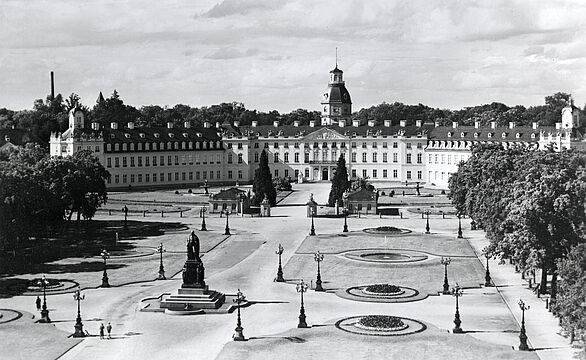
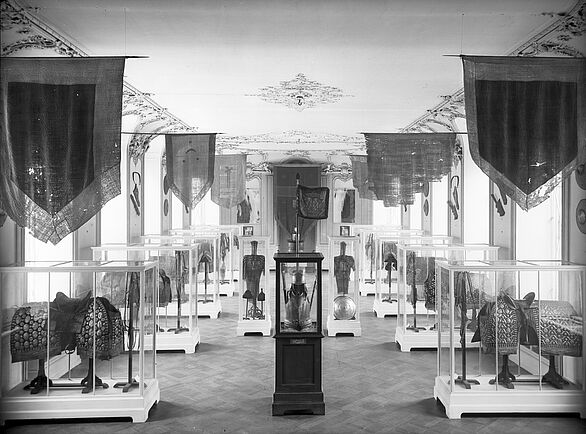
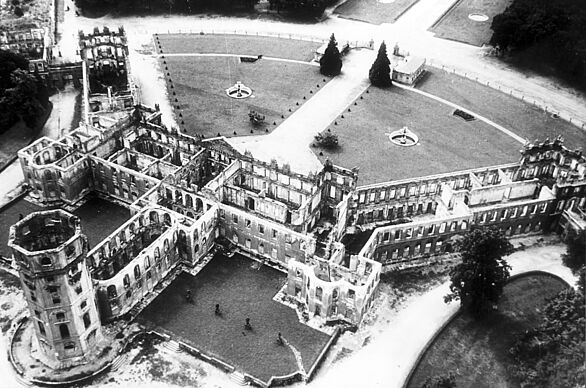
The museum's opening celebration was held on 24th July, 1921. Archaeological and cultural history collections were now accessible to the public within the historic structure. Starting in fall of 1923, the Karlsruher Türkenbeute was presented in the castle’s former Garden Hall, and the ethnological department was established in the top floor in 1924. The Münzkabinett was placed in the building's right annex in July of 1936, making all of the museum's collections available to visitors.
The Second World War represented a dramatic break in the history of the State Museum. It was closed starting on 1st December, 1939. Due to the threat of air raids, most of the collections were moved from the Palace to secure locations, spending the war in the Heilbronn salt mines or Pfullendorf prison. The Karlsruhe Palace, in contrast, burned down to its outer walls on 27 September, 1944 during an air raid.
The museum after the Second World War
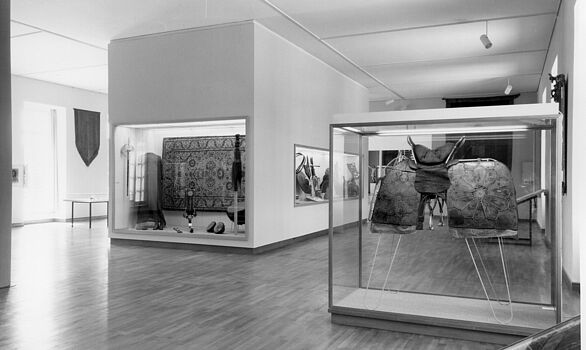
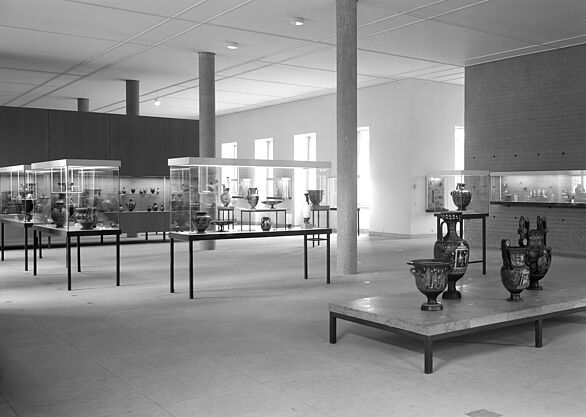
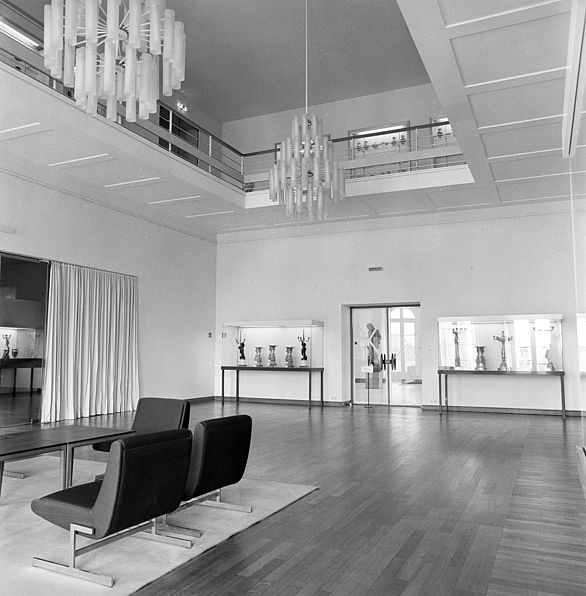
From 1946 to 1951, the stored collections were moved back to Karlsruhe, although rebuilding the palace in the city so ravaged by war was impossible at the time. Rebuilding finally began in 1952, and was concluded with a celebratory dedication of the new museum in 1966. The Baroque façade had been restored in precise detail, although the interior of the palace had been redesigned as a modern museum. The masterpieces of the collection were presented effectively, ordered by epoch.
With reconstruction of the Palace, Karlsruhe had regained its historical and architectural focal point – and, with the reopening of the Badisches Landesmuseum, its cultural heart as well. As its first major temporary exhibition after the Second World War, the museum put on an exhibit for the 300th birthday of “Türkenlouis”, Grand Duke Ludwig Wilhelm von Baden-Baden, focusing on the Karlsruher Türkenbeute in 1955. The museum then began making a name for itself with large temporary exhibitions on topics related to the ancient world and to art and cultural history.
The museum today
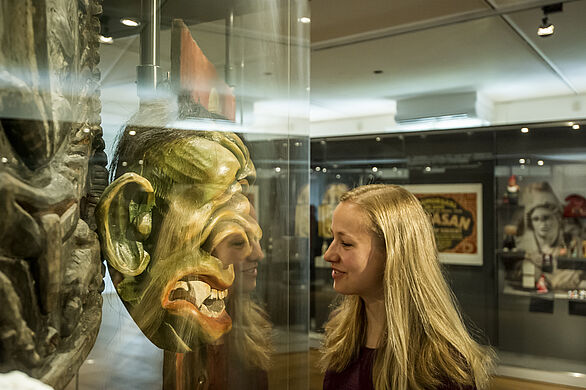
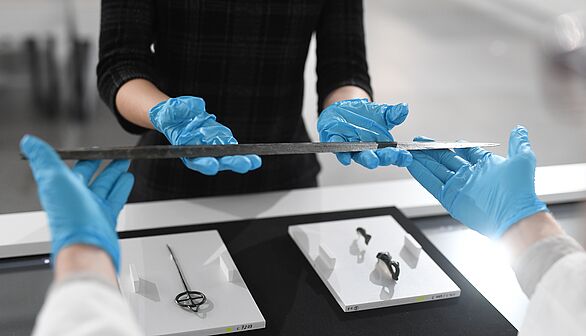
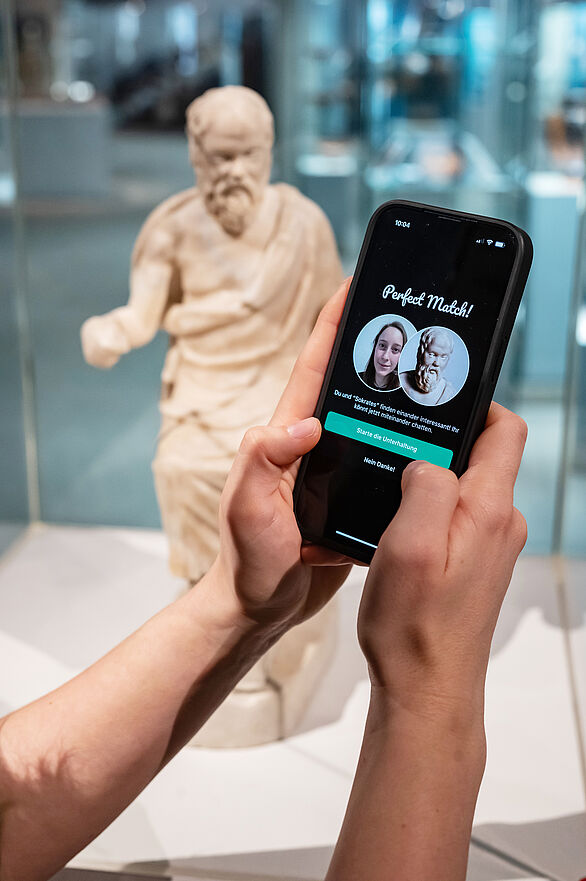
The Badisches Landesmuseum currently houses around 500,000 objects. Over time, multiple field offices and branches have been added to the museum. Currently, these include the Museum at the Market Square and Museum in the Majolika within Karlsruhe. The Badisches Landesmuseum maintains the German Museum of Mechanical Musical Instruments in Bruchsal. In addition, it has a field office in southern Baden as a research facility and archive on Baden ethnology, which includes the Staufen Ceramics Museum. The Badisches Landesmuseum also operates the Hirsau Monastery Museum, Neuenbürg Palace and the Salem Monastery Museum.
Eckart Köhne has been Scientific Director of the Badisches Landesmuseum since 2014. The opening of the collection exhibition Archaeology in Baden – Expothek¹ at Karlsruhe Palace in July 2019 heralded the museum of the future. The Badisches Landesmuseum was the first museum in Germany to offer not only admission tickets, but also a user card valid for the whole year. From then on, users could book original objects for presentation by explainers. Since then, there has been a lot of experimentation in the field of digital communication, resulting in, among other things, PING! the museum app and the AI tool xCurator.
Karlsruhe Palace has been closed since 29 September 2025 for general renovation. The other locations remain open to visitors.